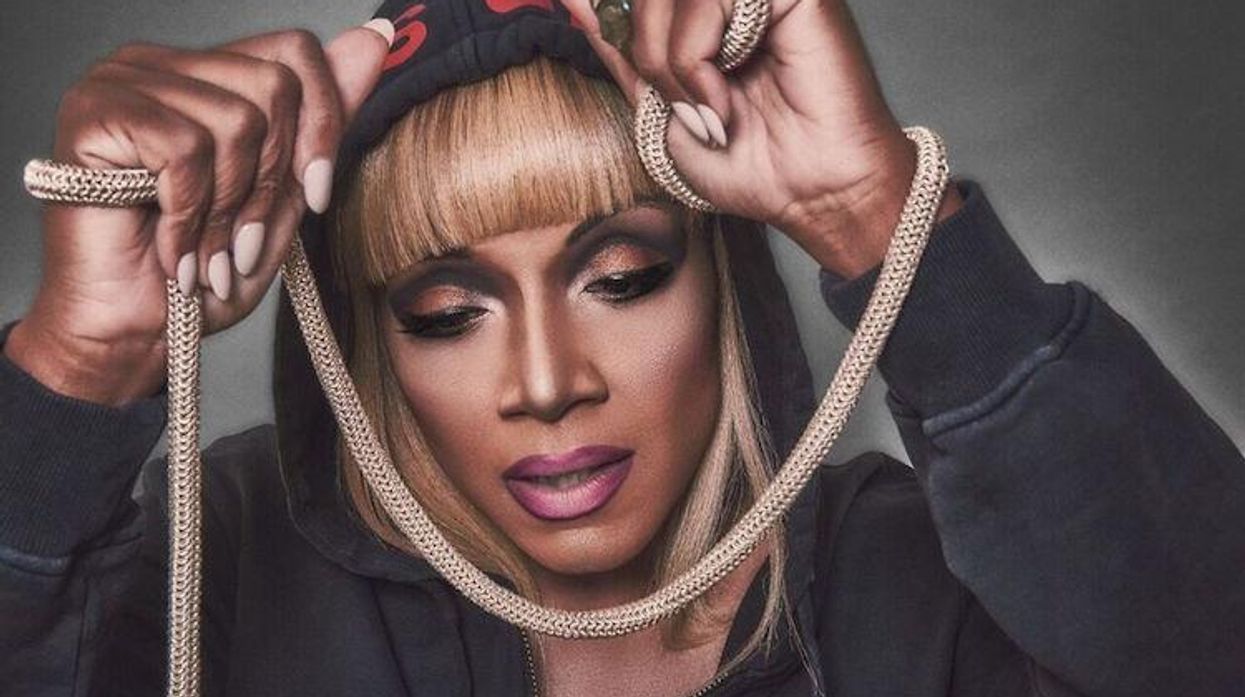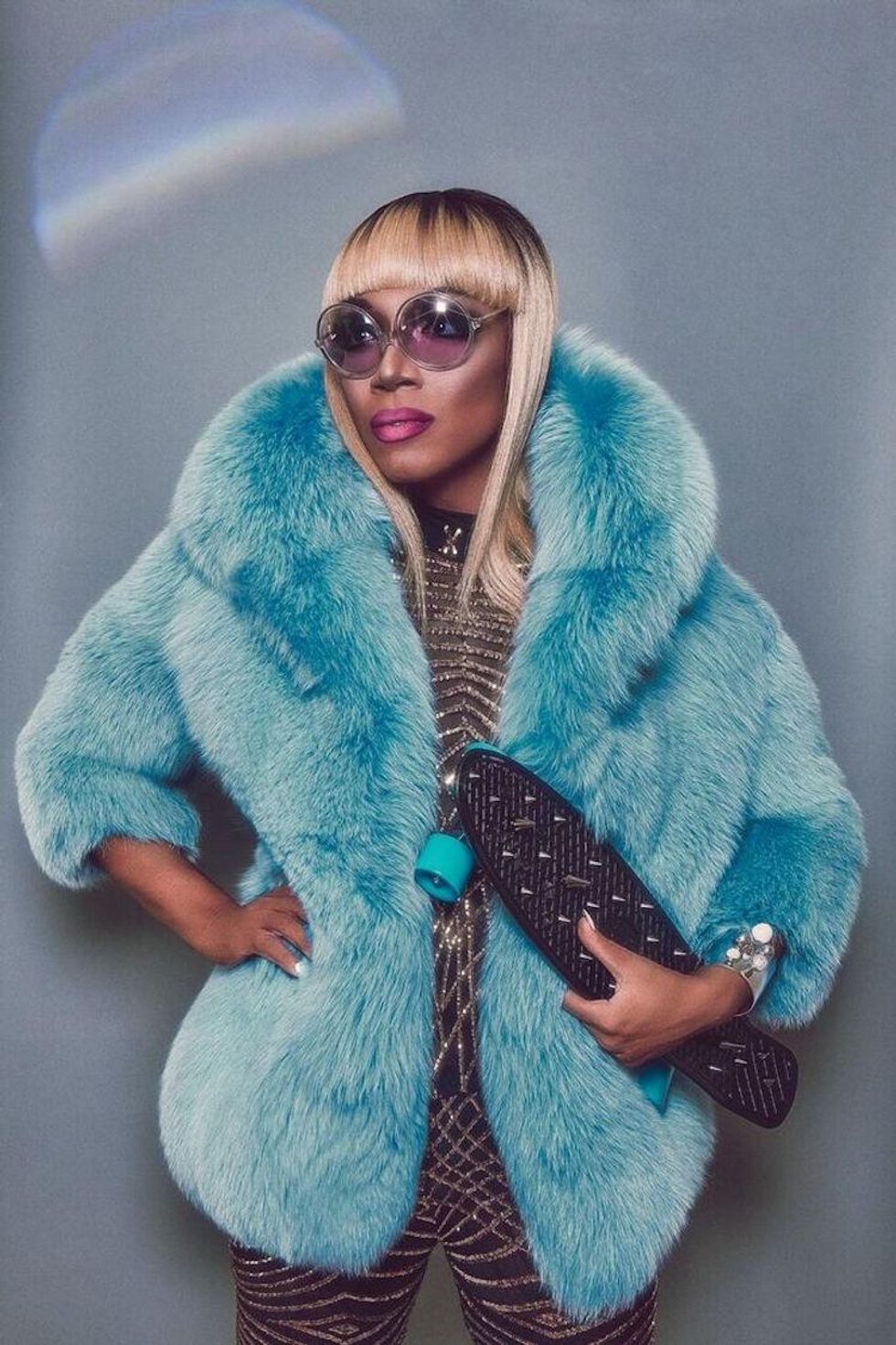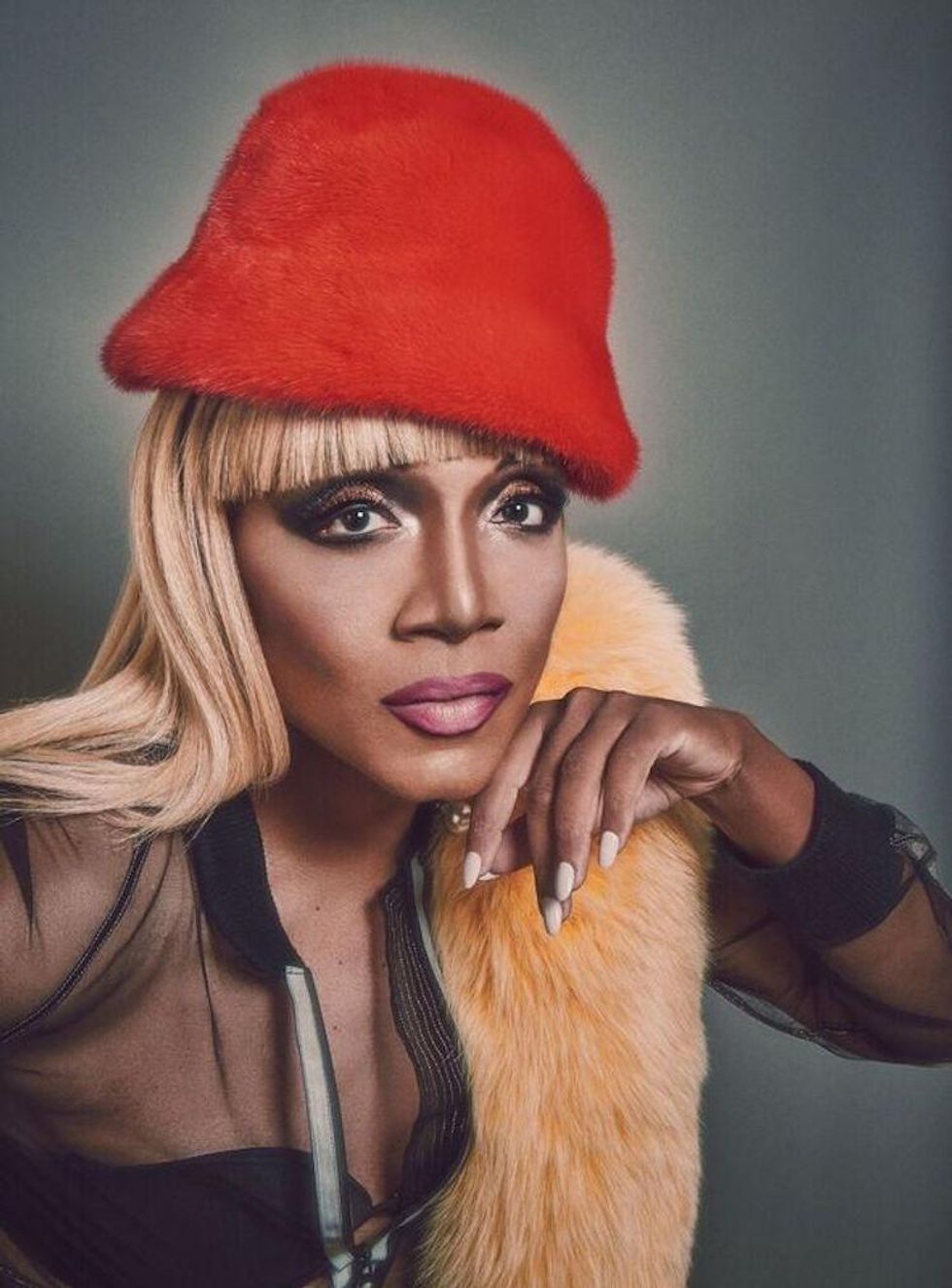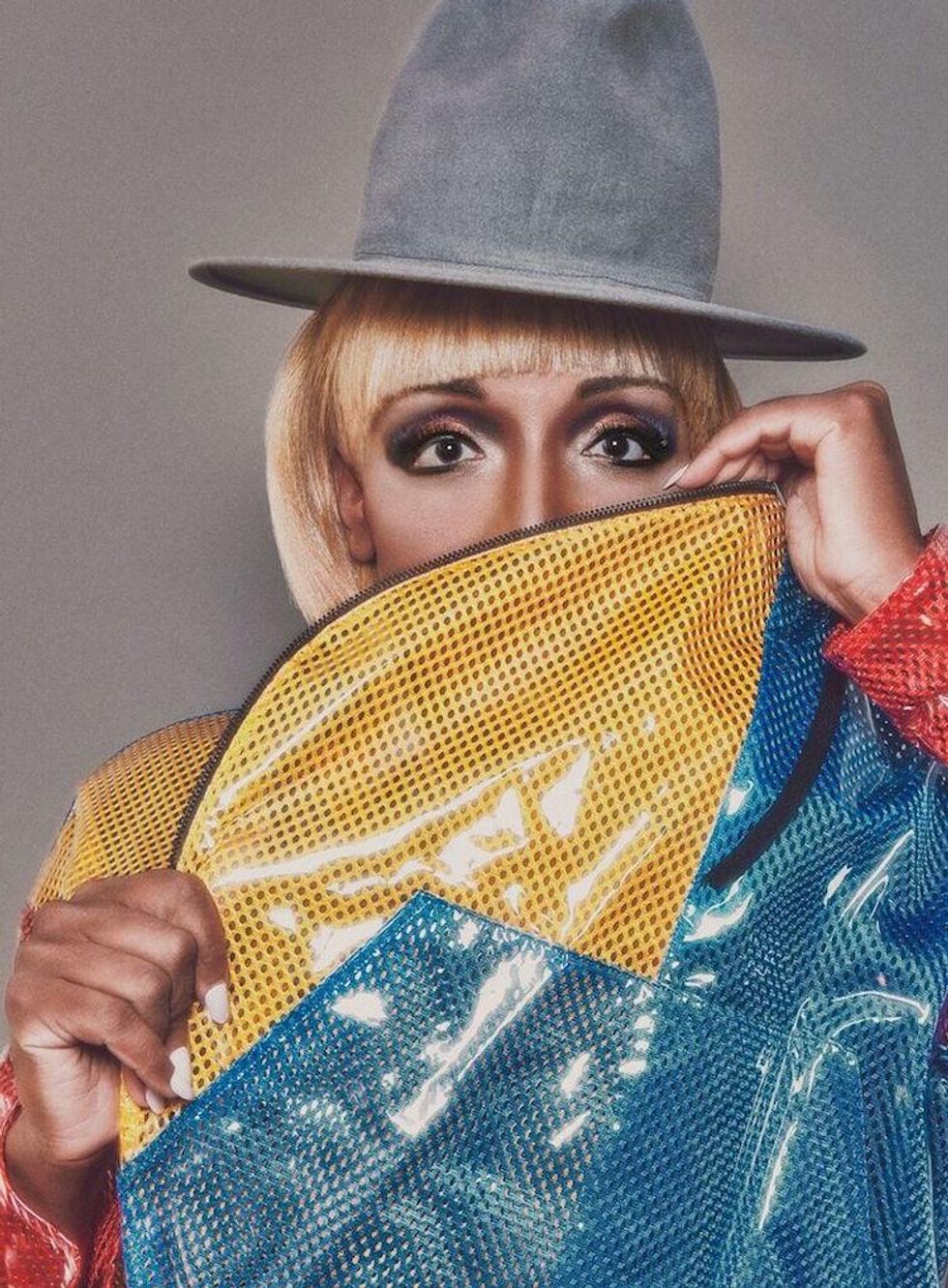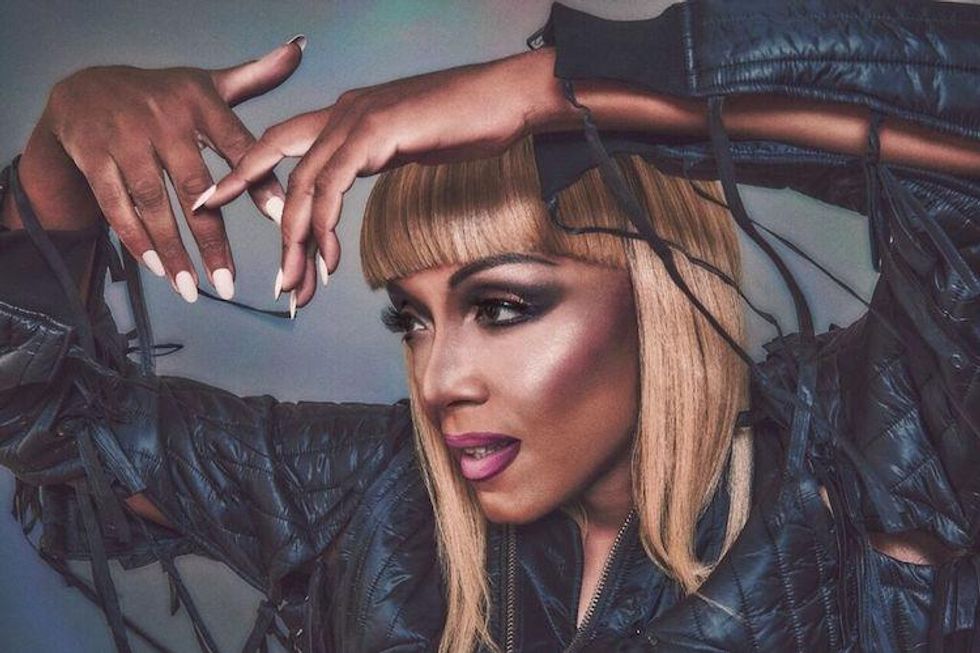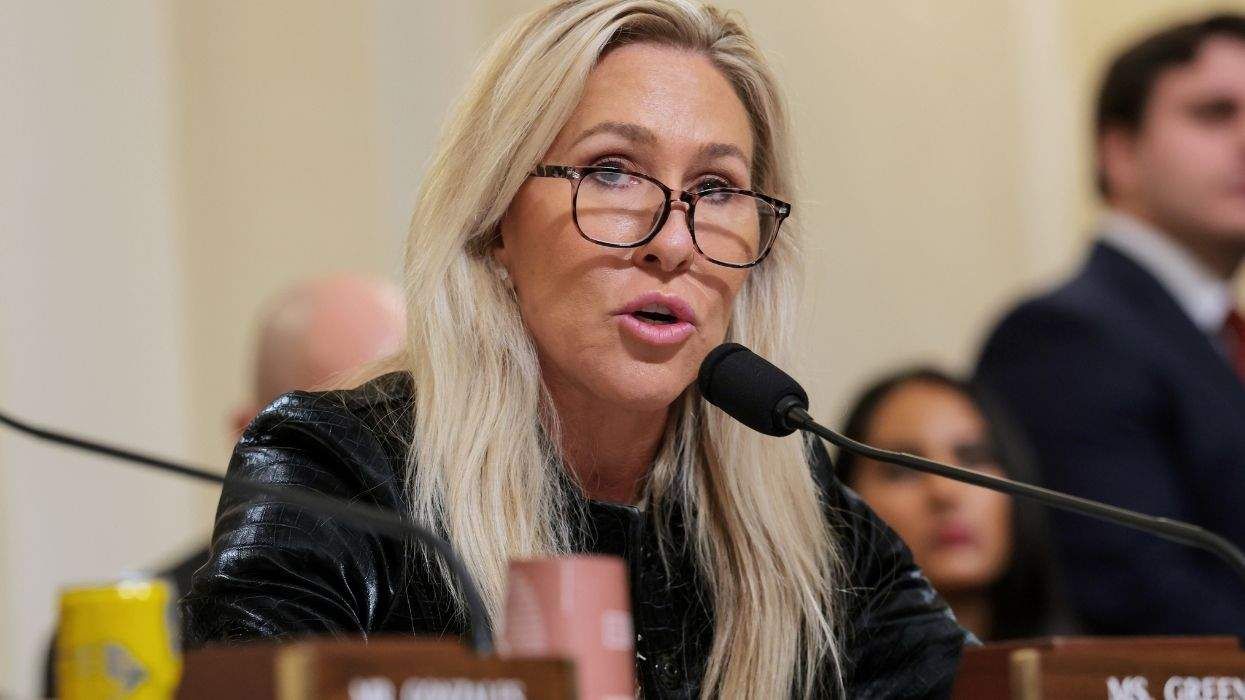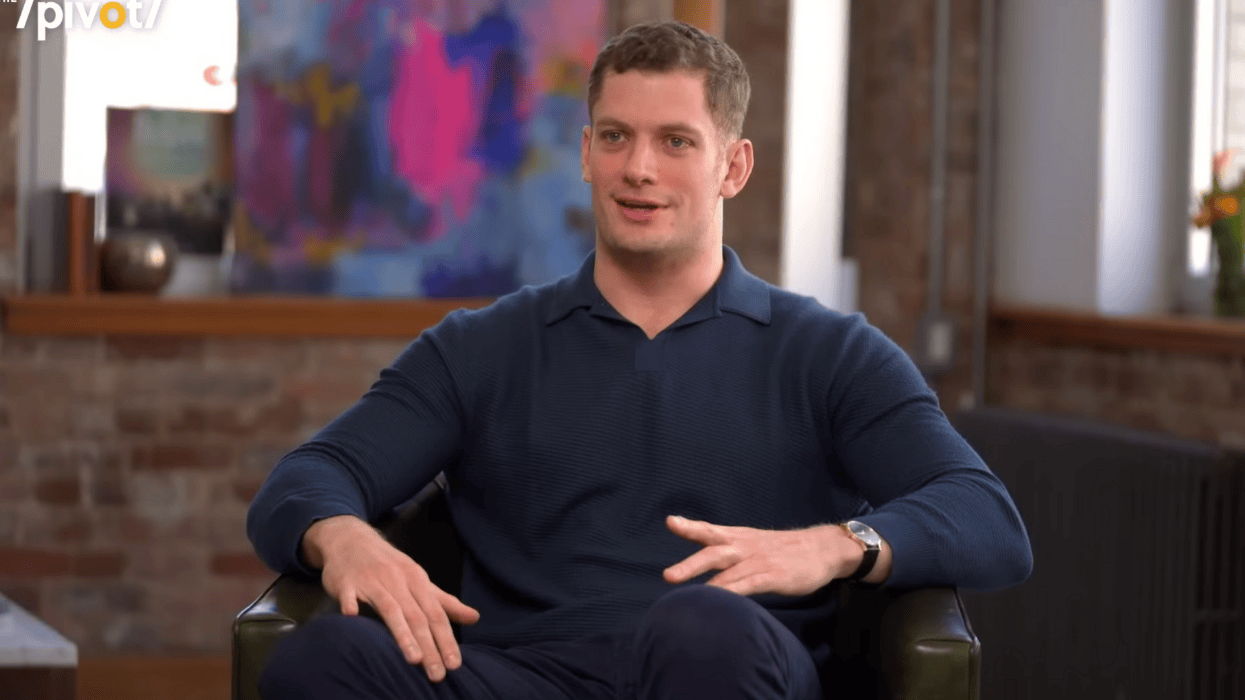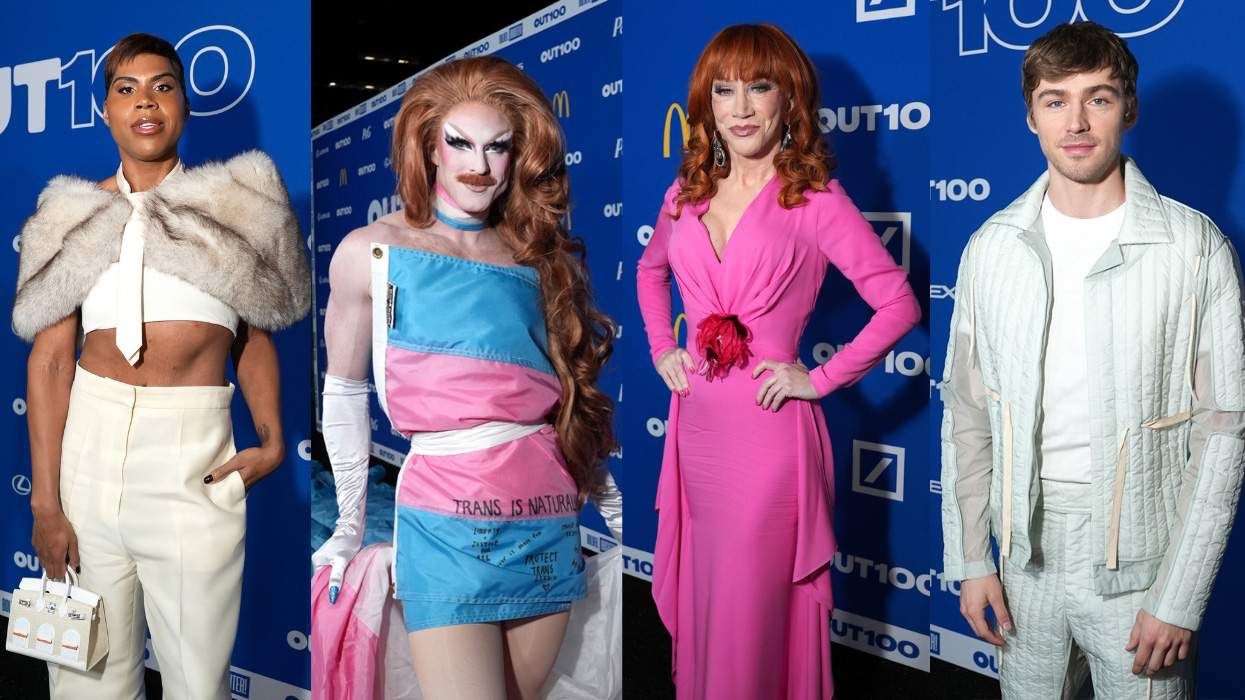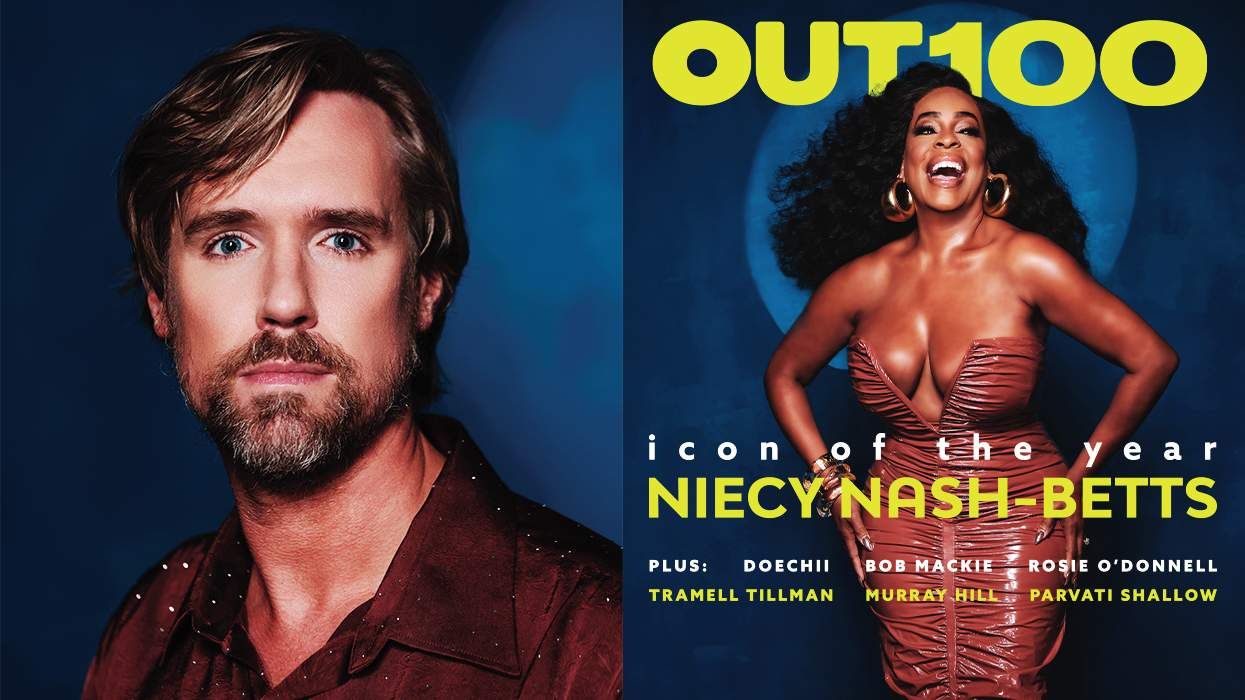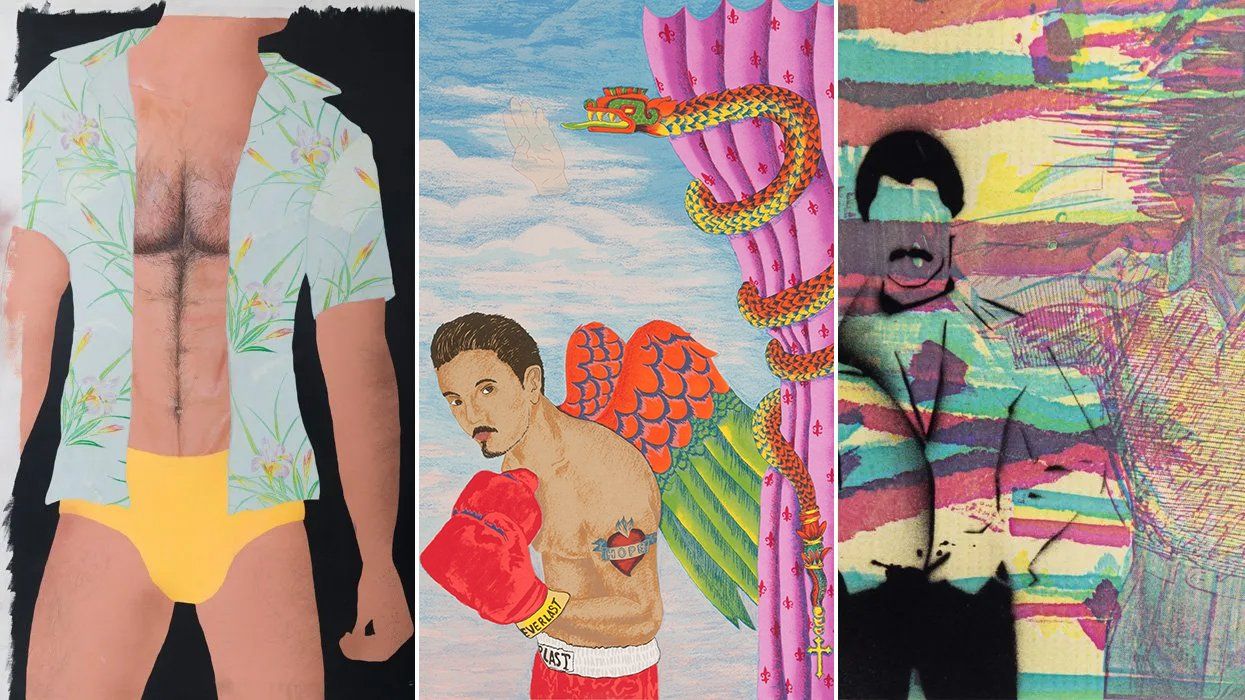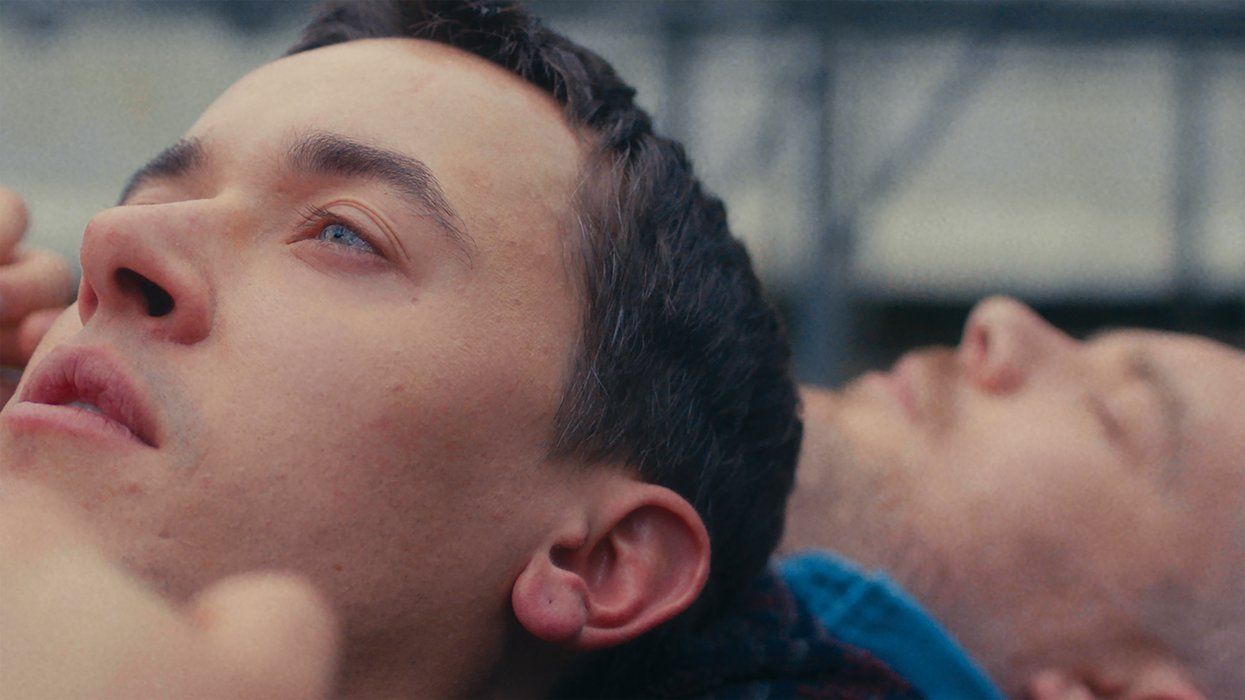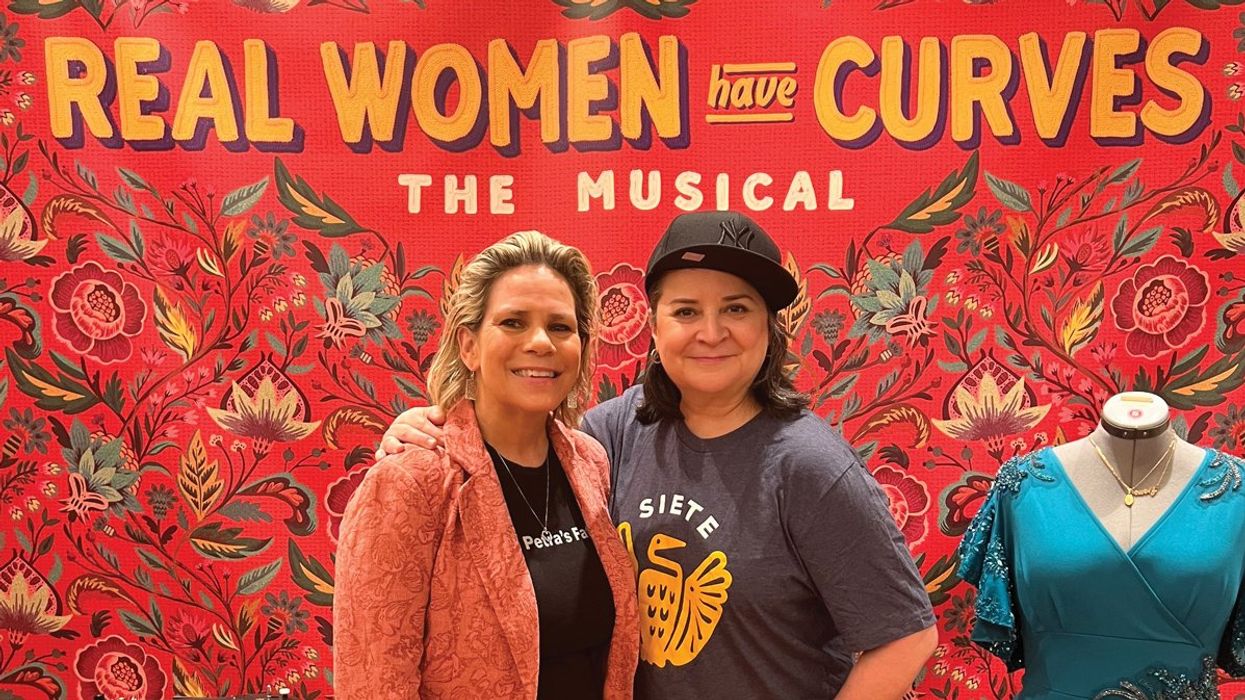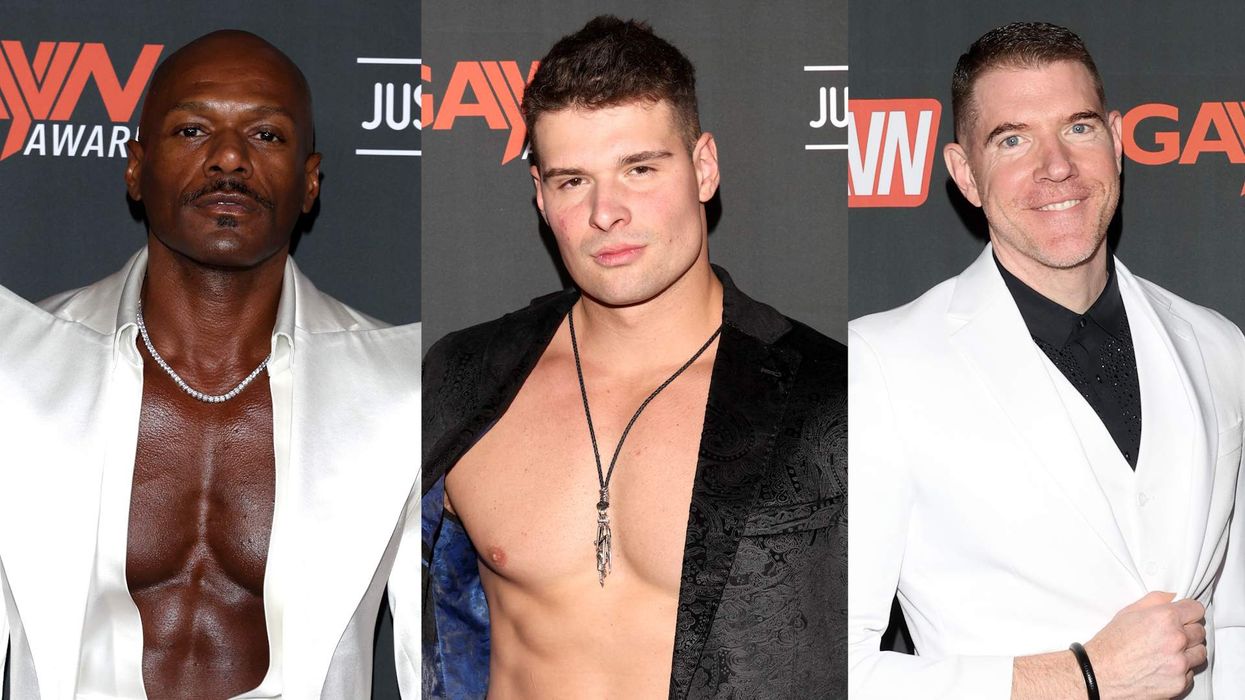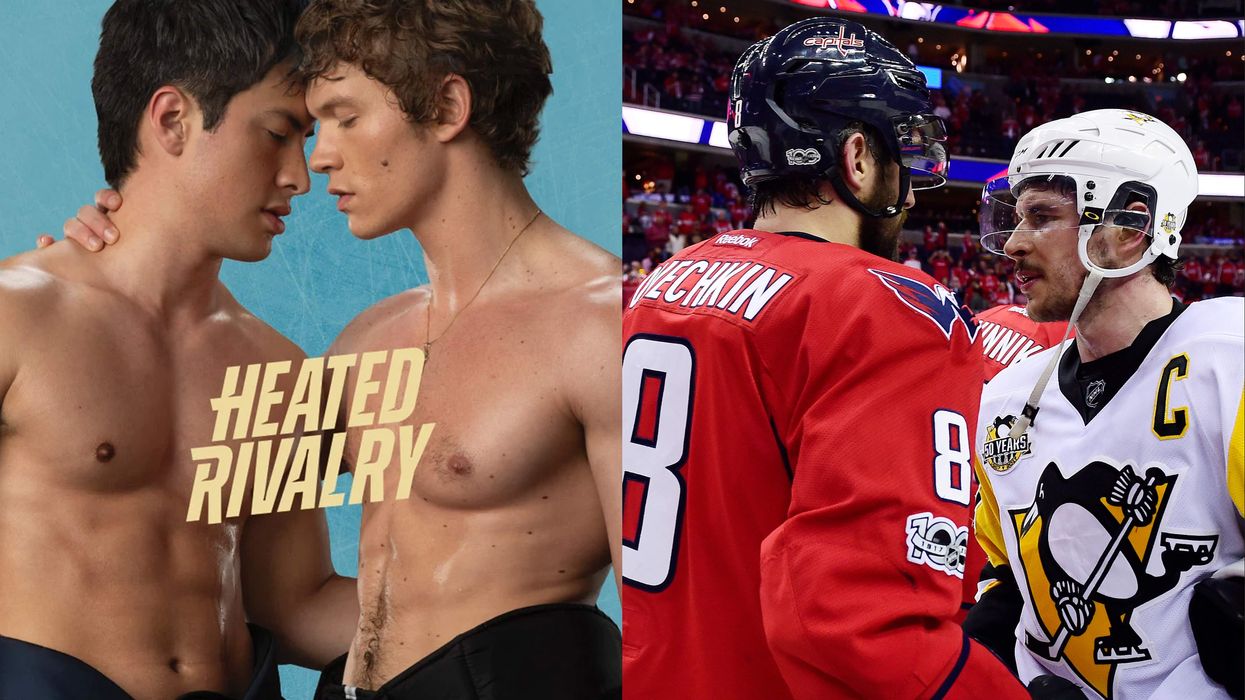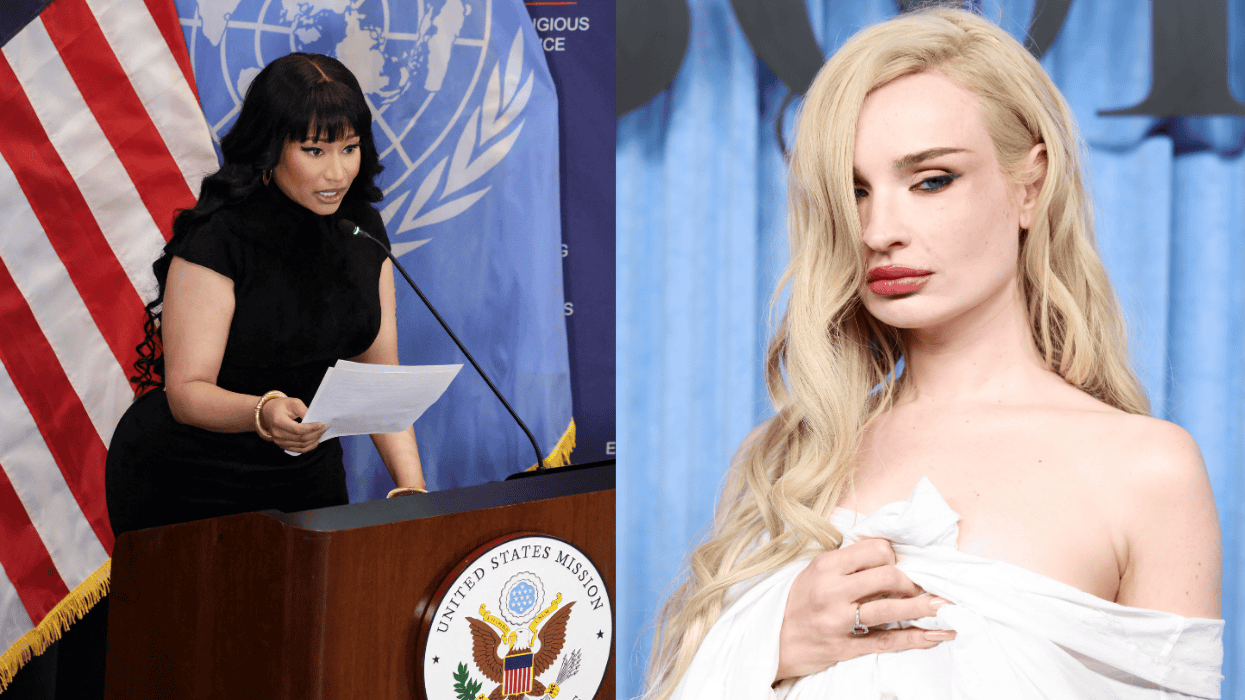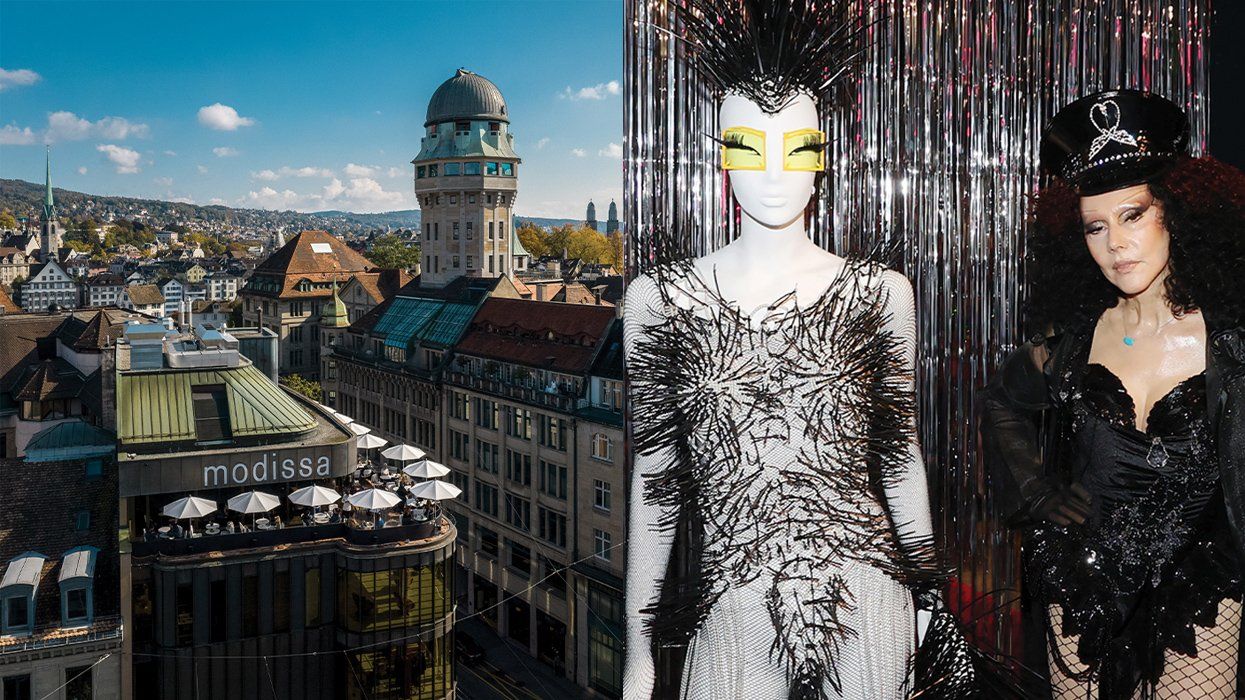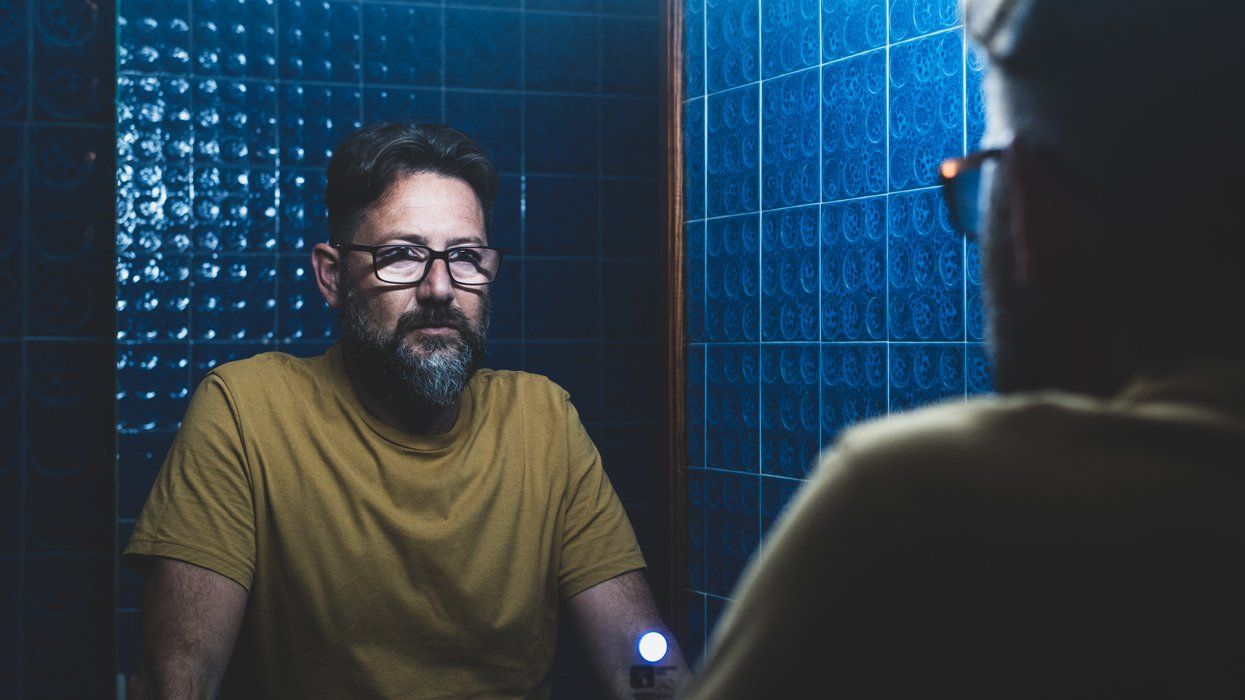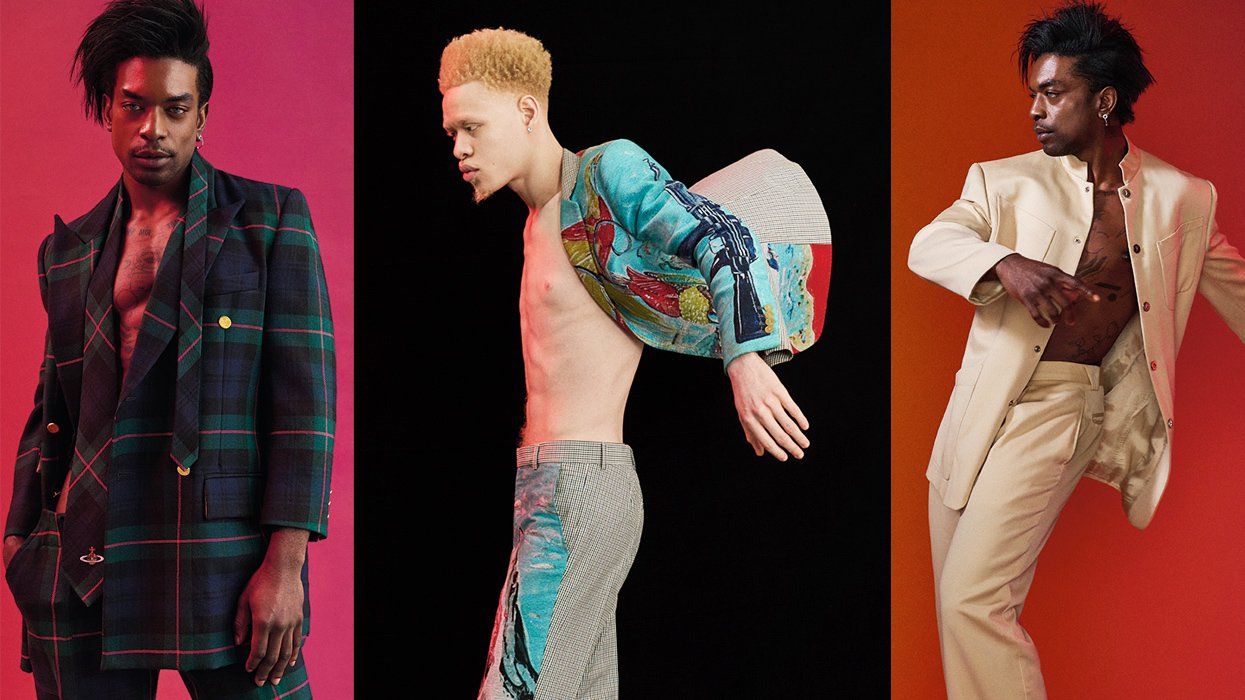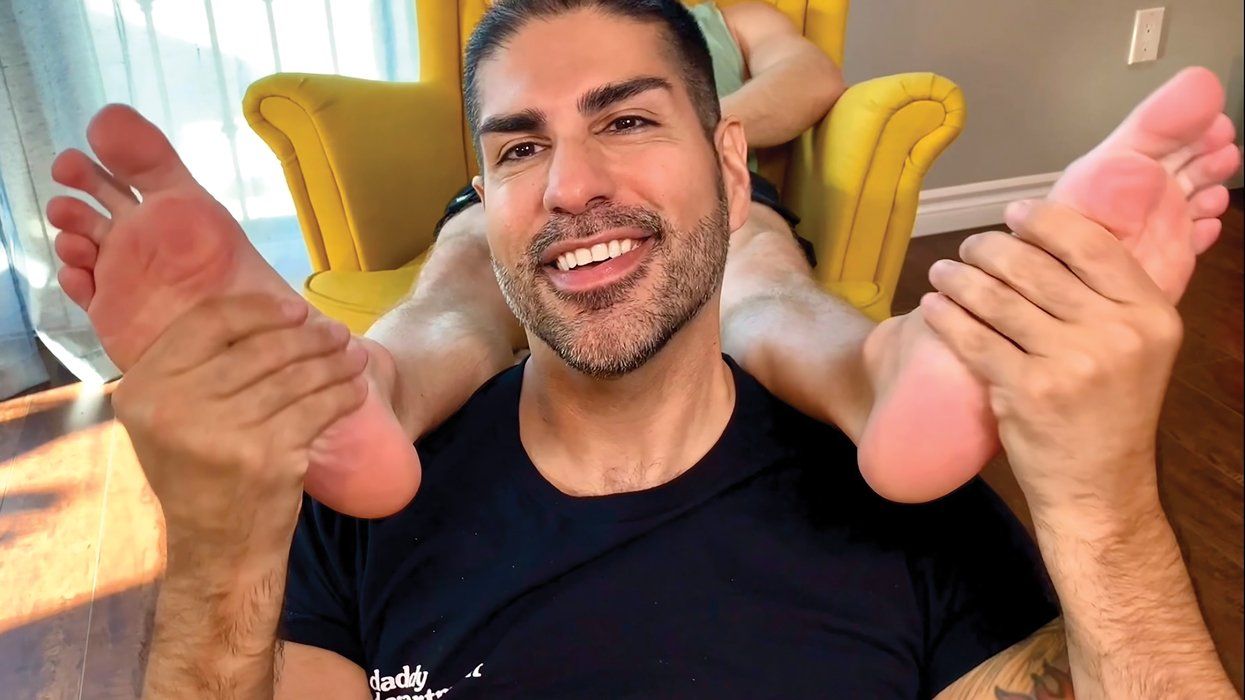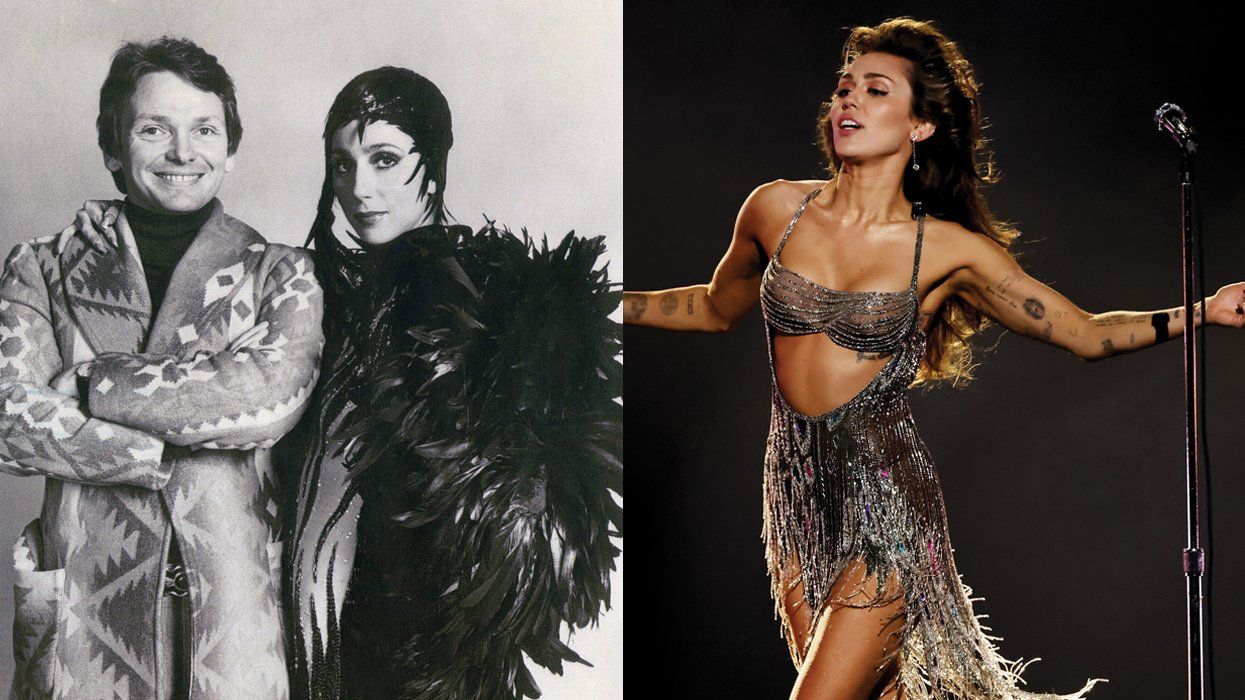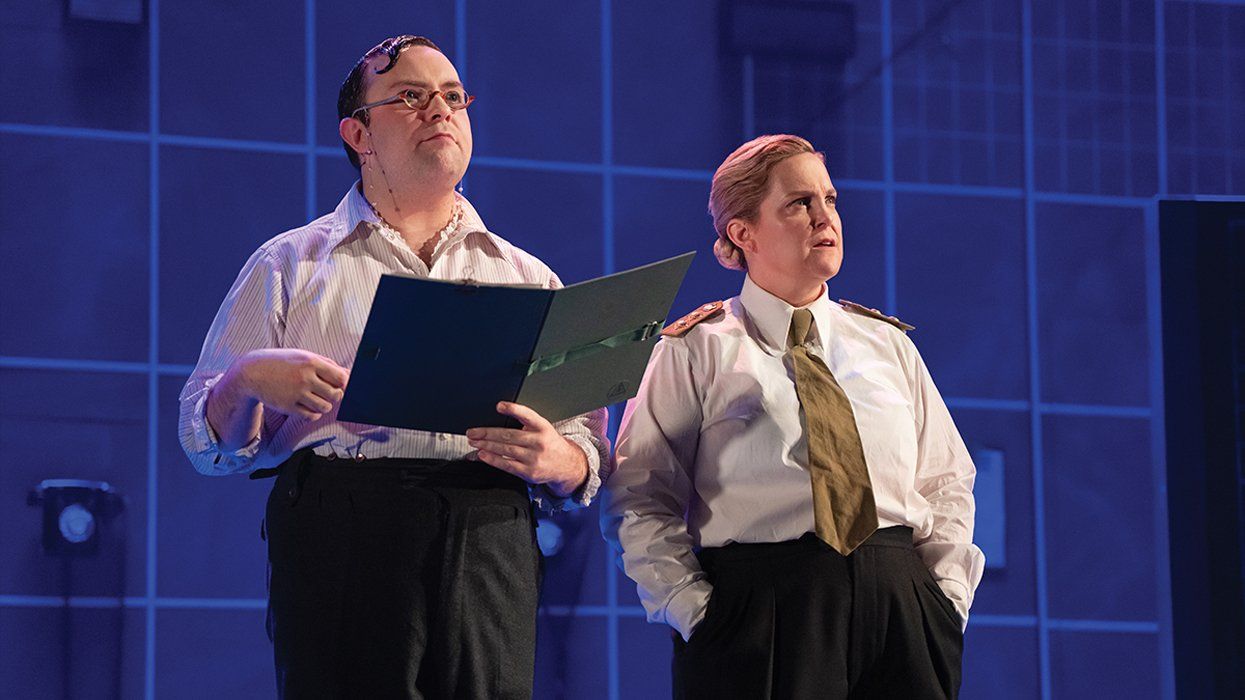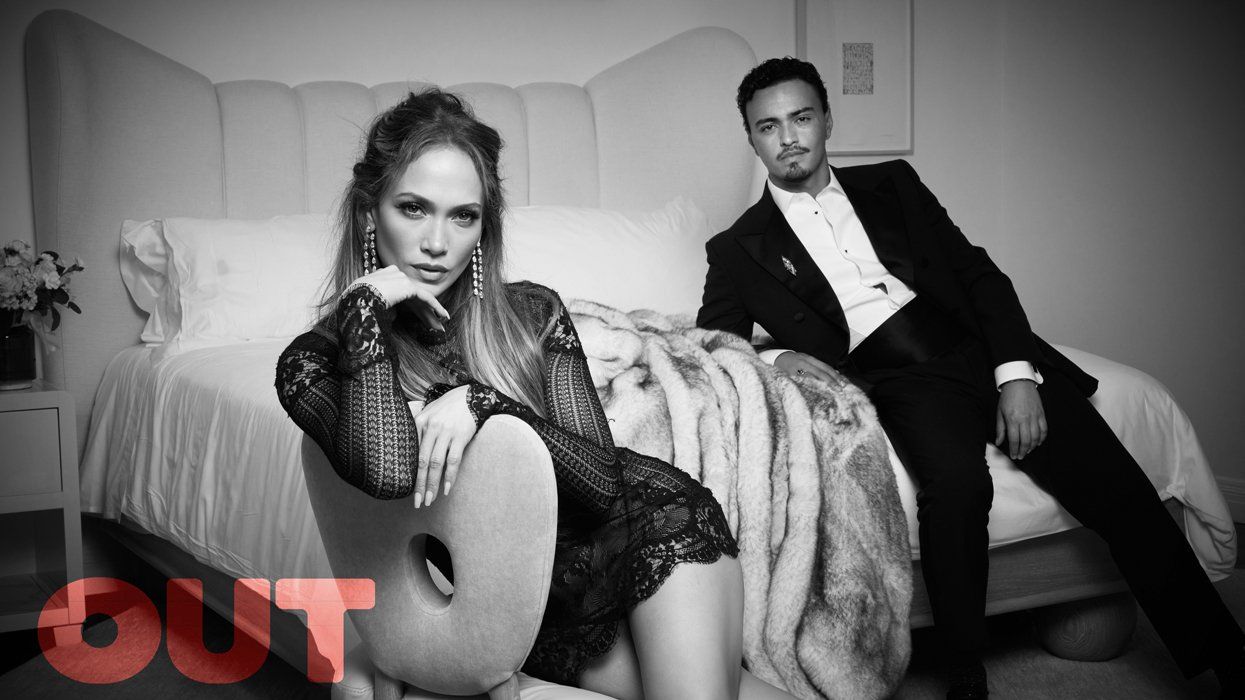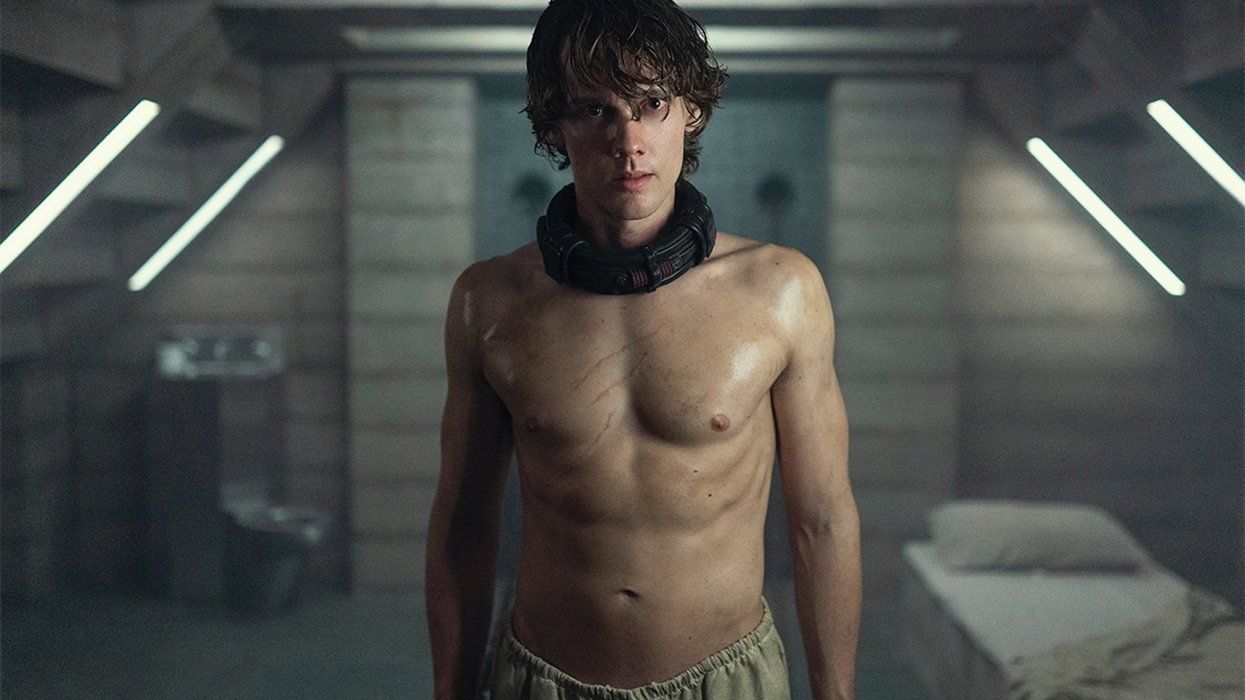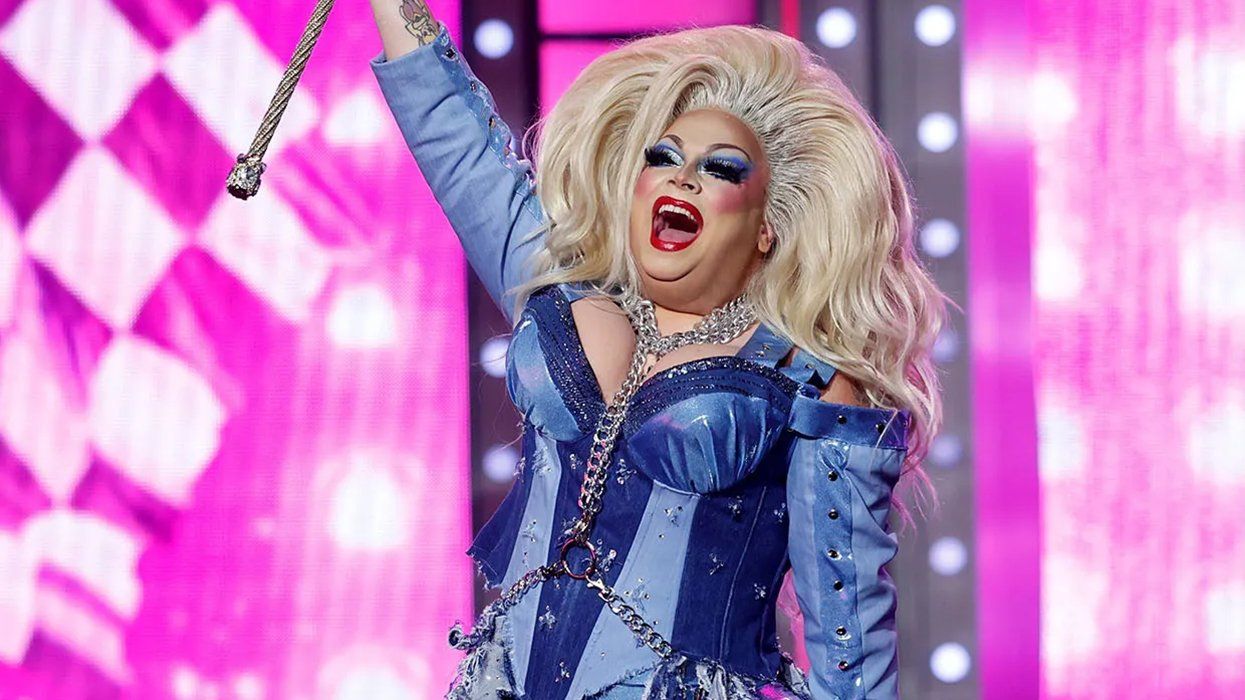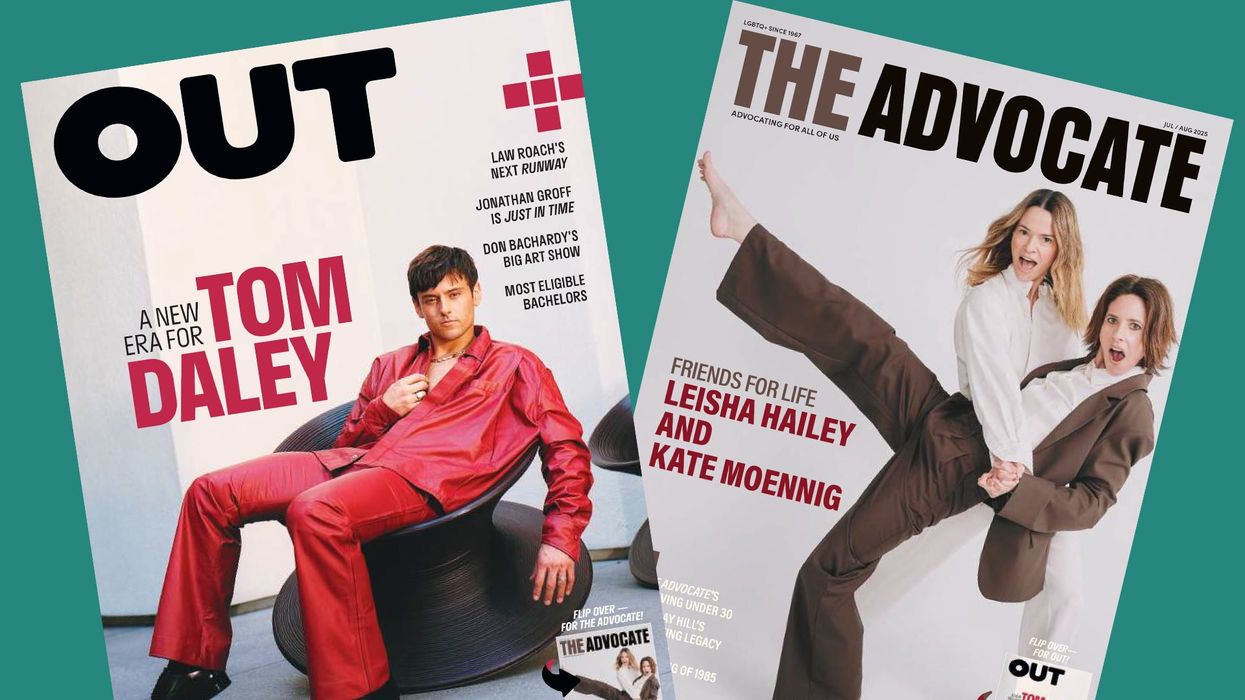As a seasoned New York drag queen who's been in the business for roughly a decade, there's not a whole lot that Stephanie Stone hasn't seen or done. Yet, in all that time, the Seattle native and fashion maven has typically served femme glam looks--sequins, sparkle, long gowns, fur. But now, in a time when gender fluidity is on everyone's minds, whether it's influencing collections or raising eyebrows on magazine covers, Stone is embracing menswear and twisting expectations. In the photoshoot for this story, she dons looks that are primarily marketed to men, positioning herself as a cis male who's paid to dress as a woman but is now widening her wardrobe and expanding beyond dresses. As she explains, it all links back to her childhood in Seattle, when she was a boy who got called names but defied categorization. And after booking gigs and hosting parties for years, she offers her insights on how to survive in this urban jungle, which will always need fabulous creatures of all stripes.
OUT: In this moment, you're a drag queen experimenting with menswear, which isn't exactly typical, and might leave some people scratching their heads. What are your thoughts on the enforced labels surrounding how we present ourselves?
Stephanie Stone: I think about words in terms of their origins, so I always think of words like "sissy" and "tomboy" as the first words you hear when you're on the playground being bullied or called a name. You're not called "lesbian" or "gay" or "homosexual"--it starts with "sissy" and, typically for certain girls, "tomboy." But even then, I saw the way that fashion was playing against all that. If you look at the history of fashion, you have the Yves Saint Laurents, you have Marlene Dietrich, and then Katherine Hepburn, who started to use men's clothing in a whole different way.
Bodysuit: Slick It Up, Cuff: Sarina Suriano, Fur & Glasses: Model's Own
And you were called a "tomboy" and a "sissy" in your youth?
I was called every name in the book because people didn't know what to make of me. I was like the punk rock kid, so I was going out as alternative or whatever you want to call it. I grew up in Seattle, a music town, so it was really easy to be alternative or grunge. So that was me--that was my dress-up, but I never felt like it was dress-up. It was a little tomboyish, I guess. You could say that was the first time I started playing with that. I would have on my Doc Martens with a faux hawk and the sides of my head shaved. My poor parents!
You being called a tomboy is interesting, of course, because that's a label usually reserved for masc-presenting cis girls.
But it was still very me. I never wanted to be a woman. It just never even crossed my mind. I've just always been such a boy in my mind. That's all I can say. People ask me about this all the time, and have my whole life, and it's just not... That's how I know that trans people are real and not just ghosts or fantasies. Because I know I would have known if that's what I was. Yes, I could present as fish, but I would have known if I were a woman. You're telling me I knew all this other stuff about me and not that? Bullshit. I would have known at six years old.
Related | Gallery: Drag Legend Stephanie Stone
So how did drag start for you?
Ah, the pre-drag years. I'd dress up just for Halloween as Naomi Campbell, that sort of thing. I always knew I was going to do drag because I looked so much like my mother growing up. I looked exactly like her and I knew even from looking at old pictures of her. I have that woman's face down. So I knew I had an advantage in starting drag because I knew that when I did it, it wouldn't come as a surprise that I looked like a woman. My journey in that way is a little bit different. I'd put on some lipstick and it was like, "That's a girl." It wasn't like I constructed my face one day and then thought, Wow, look at the change. It was more like, Let's put all of this on my face like mom does!
Bomber: Johnathan Dumas, Stole: Pologeorgis Furs, Hat: Model's Own
What does your mom think about all of that now?
We don't really talk about it, which is fine. I don't like to share it with her. Not so much because of the drag element, but because I look so much like her. It's weird. It took me a long time to show pictures of myself [in full drag] to my sisters simply because I look just like my mom, and that, to me, was strange. My family knows everything about me but that part freaks me out. Like, I could be my mother's sister.
Who else has inspired you, specifically when it comes to style?
I think just women in general. I can be inspired by anybody. My first influences when I was younger were strong black women and musicians, like Nancy Wilson and Nina Simone, because they were all I was exposed to. But then I grew up and found out who Annie Lennox was. You find those people who are similar to you and to the things you like. You look at Bjork or other people who are amazing and think, Oh, let me try that! Or, Let me take a little bit from this and use it in my way. That's so important for any artist. I'm not a very big fan of these makeup tutorials or these scratch-and-sniff, prepackaged things. Like, "I watched this, and boom! I'm done!" Because I think it can cause people to negate who they are. I think they're better than that. Everybody doesn't have to have the same nose contour. They can have a nose contour that's right for them and that would look best on them. People just need to believe in themselves a little bit harder, and then their personalities will come out and they'll know themselves better.
Coat: Woodhouse, Shirt: Stephan F, Hat: Esenshel
Did drag bring you to New York?
No, fashion brought me to New York. I went to school at Parsons for fashion design. This is a town where you kind of have to be here to do that. If you want to do anything in fashion, if it's design or retail or styling, you have to be in New York. It's kind of wild to me that it's still that way. You can do it in California and a couple of other places, like Chicago, but the main hub is still New York. Even though we don't produce the clothes here anymore, which is straight-up crazy.
And I'm sure seguing into New York drag required a lot of confidence. Were you always extroverted?
I wasn't. I had to learn it. Moving to New York, the longer I stayed here, the more I came out of my shell. I still get shy and quiet, as everybody does at times, but through the things that you survive in this town you become extroverted because there's no other way. If you don't, this town will eat you up. If you raise your hand to come to the table, there's not going to be any food left. Even if you don't want to do it, you have to. I'd love to take a year off, but I can't. If I did, nobody would know who the hell I was. You have to always be doing something. And people need to not be afraid to come up and talk to other people, because if you do talk to them, most of the time they're really engaging. It's a two-way street. You have to put yourself out there.
In our October cover story with RuPaul, she mentioned that we're in a period where the powers that be are trying to turn back the clock on progress, and that that never works. As another queer drag queen of color, what are your thoughts on that?
Fitting in doesn't work. It's nice because there's the comfortable part of it and the safety part of it and there's a lot of things that my parents had planned for me that would have been great. I could have been retired and straight and had a wife and kids and my life would have been much easier, but it wouldn't have been mine. If you have to be different, you have to be honest with yourself, and it takes a long time to get to that honesty. Real honesty always comes to a choice. You have to realize what works for you, and whatever sacrifices you have to make, the one that will make you happiest is the one that will fulfill that purpose. Money won't fulfill it. Magazine covers won't fulfill it. Oscars won't fulfill it. And if you can't get that part of your life filled, how are you going to be alone with yourself? I could have a conversation with my father and he could be like, "Oh, I wish you didn't have it so tough." But I'd say, "You know, me too Dad, but I'm happy. How many people can say that? I'm actually happy. I win!" And in terms of current times, there are more people who are speaking out about very controversial things. You're seeing it in the art scene, you're seeing more people of color do it, and that's great. And they're some difficult conversations to be had, and that nobody really wants to have, because there's so much painful history behind it. But we need to get it out there.
Jacket: XB OFCL
Speaking of RuPaul, Drag Race has had a huge impact in normalizing drag in this country, but there's still fear and misunderstanding. Tell me your thoughts and an experience you've had with that.
As far as we've come, and then gone backwards in some ways, there will always be that element. There will always be people who think we're the biggest freaks in the world. From whatever perspective they're coming from, whatever their point of view is, when you put yourself out there in the public in, their scrutiny of you is completely up to them and completely arbitrary. If you can't handle that then this is not for you. It just isn't. One time at a party I was doing a party with a friend, a woman came up and said to us, "Nice Halloween costumes." But I never get too upset when people do that because I understand I could be the very first drag queen they've ever seen, so they don't know. I think there's a spirit to the tone of how someone talks to you that you can hopefully tell whether they're being a bitch or not. And that girl wasn't. She just didn't know what to say. We both gave her that laugh and said, "Oh my god, you just read us for filth."
In shifting to wearing men's brands, as you did for this photoshoot, does the armor feel different, so to speak?
Absolutely. That was a big part of how I felt when finally had everything on. I was like, Hey, it doesn't feel like Stephanie. And I found myself adjusting my poses. I know how to make a dress look good as a girl in a picture, but changing my brain to do the same thing in boy's clothes was very different.
Do you think you'd wear looks like this professionally, for a gig?
I would! Before, I don't know if I would have. I've worn blazers before, but girls wear blazers. It's different. I've never really gone into my closet and come out with one of my men's suits and hit the streets. I've never come from lunch with someone and popped on a wig and a face and hit the stage in the same suit. But I would do that now. All these years of having a plain closet and I've never done that. There's always something to change, always something new to do.
Photography: Santiago Felipe
Hair: Kellie Empress Johnson
Makeup: Stephanie Stone
Styling: Stephanie Stone


